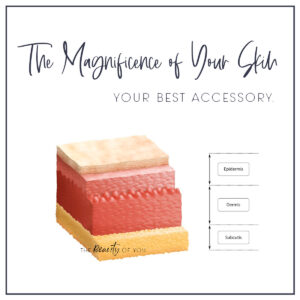How Lipsense Works: The Kickass Science Behind Your Lips
Have you ever wondered how Lipsense works?
To answer that question we first need to think about our eyes…
Do you remember those competitions you would have with other kids where you would try and stare at each other for as long as possible and the person who blinked last was the winner? How long could you last? If you were anything like me, you might win, but your eyes would get quite dry and scratchy. And for good reason!
Our eyes contain many nerve endings in the cornea which make them very sensitive. When you blink it spreads a mix of oils and mucas secretions across the surface to stop it from getting dry. Cool huh!
I’m often asked questions about how lipsense works and what the science behind it is. Well, our lips and eyes are unique in that they are two places in our body with exposed nerve endings, making them more sensitive than everywhere else (which also makes them great for kissing haha!) So for the same reason that our eyes get dry without blinking and adding back in the moisture, our lips get dry too without adding the moisture back in. Once we understand this part, the rest, as you will see, all falls into place!
Our bodies are amazing, and our lips are no exception! Did you know our lips are the red colour they are because there is virtually no melatonin in the skin on them, and the skin is very thin, so we can easily see all the blood vessels underneath the skin!
Possibly the key difference though in what makes our lips different to the rest of our body is that they have no hair on them, and no sweat glands on them, which I’m quite glad out because who would want sweaty lips?! BUT, sweat glands help to keep skin moisturised and hair helps to make it hard and give it extra protection. Because they are both missing, our lips are a lot softer, dry out more easily and are much more likely to get damaged.
When this happens, people turn to lips products (chapsticks, lip balms, lipsticks etc) to ‘heal’ them and stop them getting damaged again. The tricky thing with these lip products is that they are wax-based, and wax acts as a barrier, which stops anything getting to the lips, but it then also stops moisture getting in too.
So what does that mean exactly?
It means you don’t really want to be putting wax on your lips. It would be like putting an eye-patch over your eye but keeping your eyelid open the whole time so it couldn’t get the oils back in there again to keep your eyeball healthy.
Our skin cells regenerate regularly, and as they get pushed closer and closer to the surface, the thinner and drier they become. It’s best to get rid of them quickly (exfoliate) and ensure the newer ones stay healthier for longer (moisturise). Here’s a cool little diagram of how the layers of our skin work:

The formulation of Lipsense is wax-free, and means that it helps to both exfoliate and moisturise your lips while it’s being worn. When wearing a wax-based product and it wears off, it needs to be reapplied to continue providing the protection. Once you start wearing Lipsense however, you’ll find that your lips naturally don’t get as dry because it starts to break down all the old, dry skin cells and moisturise the new ones coming through.
So, as you can see, our lips are pretty amazing. And it’s really important to look after them, because their make up is different than the rest of our skin. Lipsense is specifically formulated to work with the natural design of your lips, so as you wear it it’s going to add moisture back in instead of blocking it out. We’ve got a huge range of colours to choose from, in both permanent and limited edition shades, with more being released all the time.
If you haven’t tried Lipsense before and you want to see how it works, you can watch my application video below:
If you would like to request a catalogue from me, this post tells you how, and don’t forget to come and follow me on Facebook for tips, tricks and lots more fun!